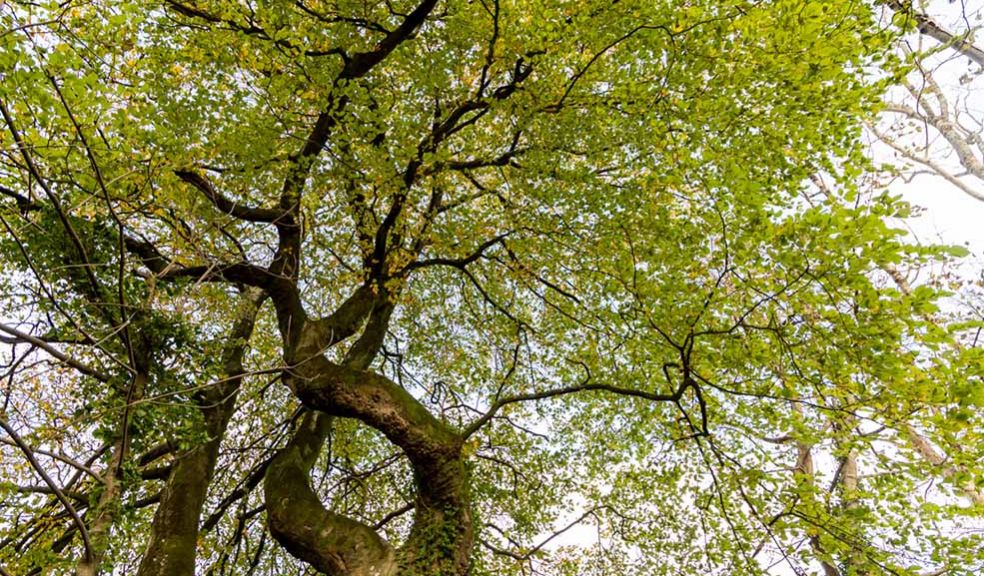
Trees in Trust
National Tree Week - from 23rd November to 1st December – is the UK's largest annual tree celebration, and marks the start of the winter tree planting season. One locally-based conservation charity is using the occasion to shine a spotlight on some of the many trees in its care.
Wild Planet Trust is the conservation charity behind Paignton Zoo. The zoo is more famous for animals than trees, although it is pleasantly-wooded. Often overlooked are the Clennon local nature reserve adjoining the zoo and the Primley public open space across the road, both managed by the Trust.
Trees need to be cared for – but they also give. Not only do they add beauty to the landscape, they are at the heart of a whole ecosystem full of life and diversity; they also provide a sense of wellbeing, produce oxygen, offer shade and yield browse – leafy branches – for many zoo animals to eat.
Reserves Warden Dave Ellacott is responsible for Primley and Clennon, and cares for some 10,000 trees of around 55 species. There are newly-planted orchards, hedgerow trees, areas of coppice, rare specimens and mature woodland. There are trees at all stages of life, from seedlings and saplings to veteran trees and dead wood.
Dave is a big fan of old trees: “It is a big responsibility managing these old trees; our time is fleeting next to their lifespans. Veteran trees are of exceptional value because of their age, size or condition. They often have features such as dead limbs, hollows, rot-holes, water pools, splits, loose bark, limbs touching the ground and epiphytic plants and lichens”.
One such specimen is the Lucombe oak. This is a cross between a turkey oak and a cork oak, first raised by nurseryman William Lucombe in Exeter in 1762. Dave: “There’s a good chance that our Lucombe would have been among some of the earliest planted, and may be around 240 years old.” In 2006, the Trust had to take the hard decision to reduce the Lucombe by 50% to ensure it would be safe. The tree has happily recovered from the work and is growing again. Whilst not as commanding a presence as it once was, it is still a grand looking specimen. A second Lucombe oak, around 30 years old now, is growing well and will ensure the park will have Lucombe oaks well into the future.
Trees are just as important for wildlife once they’ve died. Standing dead wood and dead wood on the ground is vital to the health of the ecosystem. It’s important for decomposer organisms such as invertebrates and fungi, and those other species that then feed on them.
The reserves are dominated by woodland. Primley was part of the grounds of the big house where the family of Paignton Zoo founder Herbert Whitley once lived. Like many estates, it has large specimen trees, including beech, turkey oaks and even a few oddities like a monkey-puzzle, a cork oak and a Canary Island pine, which is subtropical but survives due to our mild climate and a south-facing slope.
Clennon is an ancient woodland, meaning that the area has been wooded since the first maps were drawn up circa 1600. Dave: “Whilst in the pre-industrial past the woodland was heavily managed for timber products and associated lime kiln work, today it is relatively unmanaged, allowing for the natural cycles of trees growing and decaying, falling and opening up gaps in the canopy for new trees to take advantage of. The exception to this hands-off approach is safety work around our boundaries and our nature trail coppice area.”
The nature trail, which is inside the zoo grounds but loops down into Clennon’s wooded valley, is coppiced annually to promote a diverse range of conditions. Dave: “It means we have everything from freshly-cut coppice where sunlight can reach the ground and promote growth from the seedbank to dense cover where birds can find refuge. Some of the branches are taken for small perches around the zoo, the rest is chipped and left on the path as a simple surfacing material. The larger logs are left in piles as dead wood habitat.”
The Trust’s woodland is a useful source of timber. “One of the nice things is that we can use some of the timber we fell for making stuff like benches for visitors to use,” says Dave. “Oak is one of the best woods – it’s good for steps and benches. Recently a large Western red cedar fell down and I’ve been using that for fence posts – it’s naturally durable, so we use it instead of softwoods treated with rot-resistant chemicals. There’s great pleasure in making things with material that has come from the woods – plus, it’s sustainable - the transport emissions are minimal!”













